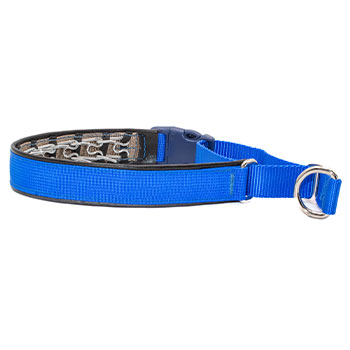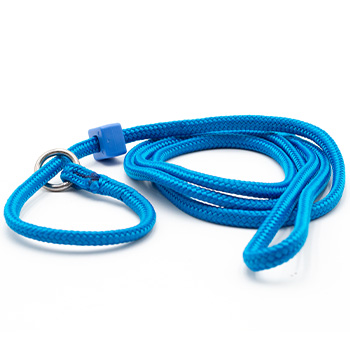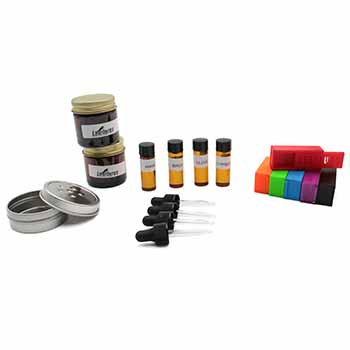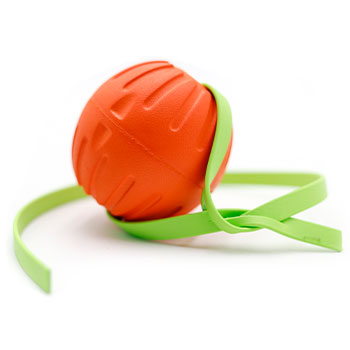Webboard User

 
Reg: 01-05-2004
Posts: 560
Loc: Bushkill, PA
 Offline Offline |
|
The clicker and "good boy" are exactly the same thing, Jenn.
They can both be used to mark a behavior you want, I agree with that. But if they were indeed EXACTLY the same, then there would be no point in using the clicker at all (which is what many people who do NOT like the clicker say). To keep the 'battery' charged and the clicker working at 100% (and that is someone else's reference, not mine) it must be backed up each time with a reinforcer.
I find it amazingly that apparently 100% of dog and animal trainers do not use clicker training and operant conditioning properly and are unable to gather the proper information from the studies. I still have not been shown any sites from DOG/ANIMAL trainers that differ from what I have been saying from my first posting.
I believe the more clear and consistant we are to our dogs in training, the faster they learn. I understand the fact that the click is a sharp, concise and 'neutral' marker (or bridge) BETWEEN the behavior I am looking for and the reward my dog is working for. Part of being consistant is that my dog knows, 100% of the time when they hear that click sound they just did something well and the reward is coming soon and BEFORE they do 50 other behaviors to confuse the issue.
IF I CLICK, I will treat. This is consistant, clear and my dogs know exactly what's going on.
This site says
The clicker is, by its nature, consistent. A click always means, "You're doing exactly what I want" and "You're going to get rewarded." Once the dog learns the desired behavior, it's not necessary to click every occurrence. Clicker training uses the slot-machine principle to its advantage: a variable schedule of payoff keeps the dog working because each performance might be rewarded.
And This site
as the trainer you use a marker signal, the clicker, to tell the animal when he does what you want. The clicker is like a camera “taking a picture” of the behavior you are training for.
The technology is, at its core, very simple:
Get the behavior.
Mark the behavior.
Reinforce the behavior.
For example, say you want to teach your dog to sit. When he sits, you click. Then you give him a bite of his favorite treat. The click means “That behavior right there! That’s what I want!” and “You’ve earned a reward.” If you click and reinforce every time your dog sits, he will soon figure out that sitting earns a treat and offer the sit more often. You can then add a cue, “sit,” to tell him when you want him to do the behavior.
And this site
The click must be followed by a reinforcer—something the dog is willing to work to obtain. You have a variety of reinforcers available. Some of the most commonly used include:
Food
Toys
Praise, attention
Opportunity to do something the dog wants to do
Opportunity to perform a well-known behavior
In a formal training session you want to get as many repetitions as possible. Food is an excellent reinforcer because it can be cut into tiny pieces and eaten quickly. Toys are also a good reinforcer, but playing with the toy takes time, meaning you get fewer repetitions in a session. Praise and attention are wonderful additions to food or toys, but are often not desired enough by the dog to use alone, particularly in distracting situations. The opportunity to do something else is sometimes the most powerful reinforcer you have.
The most important thing to remember is that the dog determines what is and isn’t a reinforcer in a certain situation. If the dog doesn’t want what you’re offering, it’s not a reinforcer.
states
6. Eliminate the clicker.
Slowly start using praise as a reward. The reward is still VERY important, but the clicker is a communication device to teach the dog what we want. Now that they know, we don't need the clicker, just the reward for a good job.
Some people don't like rewarding their dog with food. If that is the case, by now you can gradually change over to praise. If you don't have a problem with it, continue using it variably. Give your dog food for a reward every once in a while and praise, tug, chase, loving etc. all the other times.
Remember, nobody and nothing works for free!!! Dogs are no different, give them something for a job well done and give them nothing for not doing the job.
And this states:
Using the Clicker Correctly
The clicker is a tool. It's not a magic box. It's not a gimmick. Used correctly it enables you to do something that other training methods struggled with: communicate exactly what behavior is desired. The clicker is for teaching mew behaviors. Once the dog is freely offering the desired behavior, it's time to fade the clicker and put the reinforcements on a variable schedule.
Think of the clicker as a camera. You want to take a picture of the action that you want repeated. Remember, it's the action that you want to capture, not the end result. For example, to capture the sit, click as the dog lowers his haunches, not after his butt is on the ground.
The click means three things:
1. You just did something I like. Click and treat any time the dog is doing something you like. Reinforced behavior occurs more frequently.
2. The behavior is over. The click ends the behavior. If the dog jumps up from the sit immediately after you click, that's okay. Duration is a criteria you can add later.
3. A reinforcement is coming. Always reinforce the dog after clicking. Even if you click accidentally or at the wrong time, reinforce.
Ways NOT to use the clicker:
- Don't use the clicker as an attention-getting device or to cue your dog to come to you. Know what? It works. But once your dog understands the real meaning of the click, you'll be reinforcing undesired behavior such as ignoring you or barking at passers-by.
- Don't use the clicker solely as a praise marker. Timing counts. Yes, your dog will eventually figure out what you want in spite of your bad timing, but he'll learn MUCH faster if he can count on it to mark behavior.
- The click always ends the behavior. If you are teaching a multi-part behavior such as a retrieve or the dog walk in Agility, and you want to indicate that one part was correct without ending the behavior, simply substitute a word like "Good" in place of the click.
I know that going on and on like this from world famous dog trainers that have been using this method for years is not proving anything to some people, but hopefully others are more open minded. AND I still have yet to see other WORLD famous and reknown trainers who use the clicker to train be cited to show anything different.
Intelligent dogs rarely want to please people whom they do not respect --- W.R. Koehler |
Webboard User

   
Reg: 11-28-2001
Posts: 3916
Loc:
 Offline Offline |
|
The click is not a neutral marker.
It is a reinforcer. That is how it is marking behavior, it is rewarding the behavior in an exact and precise manner.
Jen wrote: "I find it amazingly that apparently 100% of dog and animal trainers do not use clicker training and operant conditioning properly and are unable to gather the proper information from the studies."
Now this is just stupid. You found one other dog trainer just in this thread that understands what I'm saying (Richard). . . If you keep looking for training information in places like Melissa's website you're not going to find the best training information. Like I said, post as much of that crap as you like.
I now understand exactly why clicker guru's omit information, its difficult material.
Don't worry about all that complicated scientific mumbo jumbo. . .keep on clicking and treating.
I bet you'll have great results. Thankfully these smart dogs of ours, especially those with a good work ethic, can work out what we are trying to do, even if we aren't making it easy for them!
|
 Page 5 of 5 <<345Last
Page 5 of 5 <<345Last Top
Top


 Top
Top




 Top
Top




 Top
Top
 Previous Topic
Previous Topic Index
Index Next Topic
Next Topic Page 5 of 5 <<345Last
Page 5 of 5 <<345Last 














